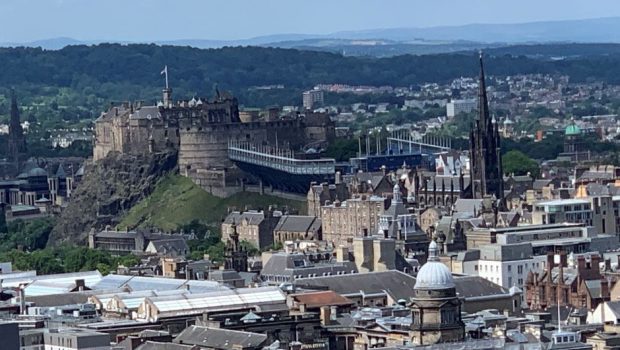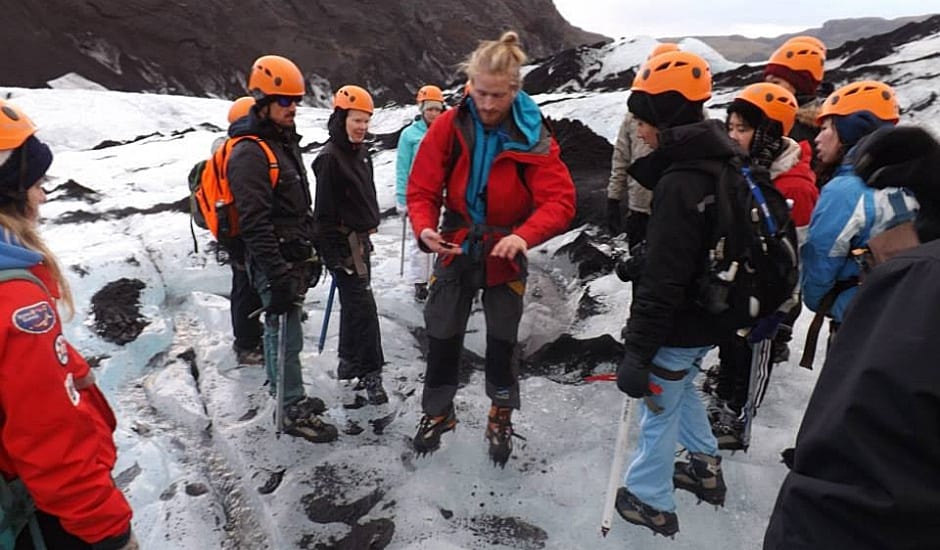When the Dead Sea has been on your bucket list for years, it’s only natural to want to know how to easily access it from your hotel, in this case the Mövenpick Resort and Spa Dead Sea. Which is why I’m totally confused by the map that looks like something out of Disneyland.

The check-in clerk is waxing lyrical about the restaurants, the spa, the live music, the belly dancers … the pools, so many pools …
I’m bemused. Surely the Dead Sea is the main point of the hotel? Apparently not. Guests want a lot more options than just a patch of salty water to float upright in. They want summer pools, winter pools, childrens pools, infinity pools …
‘What’s the quickest way to the Dead Sea?’ I ask, since we’ve arrived late afternoon and it’s getting on for 4pm.
‘Oh just follow the path, go left, and right, then straight, you’ll see it,’ he says vaguely gesturing to the map. ‘We close it at 4.30 though.’
‘So, why can’t we go there after 4.30?’ I persist.
‘It’s too dangerous for guests.’
‘Ah …’
I’m none the wiser, but I guess we’ll find out why.
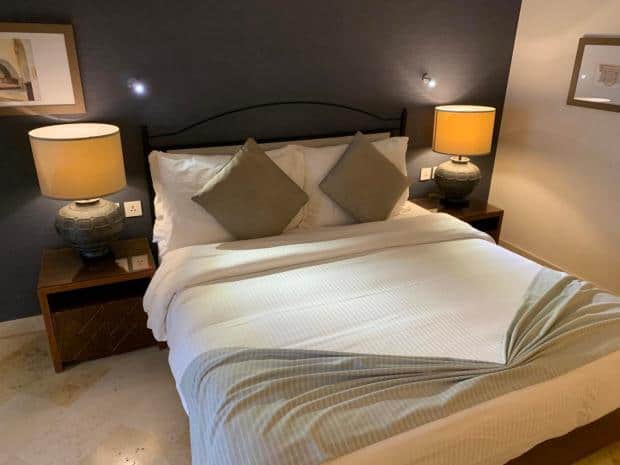
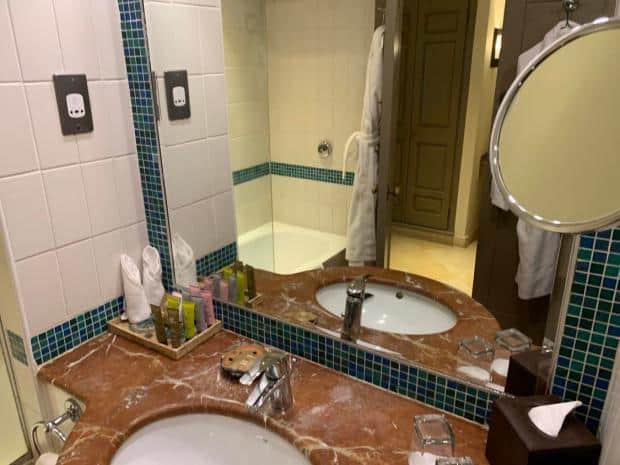
After dumping our luggage in the room, we do a dusk reconnaissance to get our bearings.
The resort is 6,000 square metres in size so it’s a fair trek to actually get down to the beach and the sun is quickly dipping in the sky. On the way, Chris is distracted by the Hydro Pool which he thinks may have hydro slides but the gate is locked and we can’t figure out how to get in.
‘It must be part of Zara Spa,’ I say.
People pass us on golf carts because the place is so large it warrants them. There’s even a funicular but it’s not working. Eventually we reach the Dead Sea, the lowest place on earth. So the sign says. But as Chris points out there are stairs going down further so isn’t that the lowest point? Maybe they should move the sign.
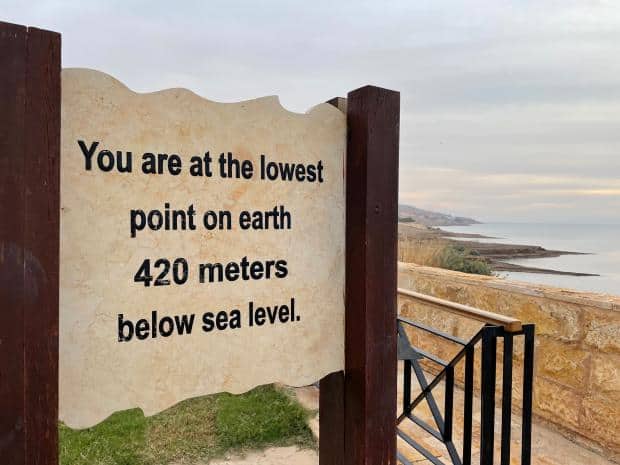
Down at the shoreline, there’s a square patch of the sea marked out by buoys where a handful of people are froliking about being careful not to get water in their eyes.

Apparently it stings like hell and has been described as like ‘acid burning your eyeballs’. You’re temporarily blinded until it’s washed out with fresh water. If you have any cuts or scratches you’ll know about it too.
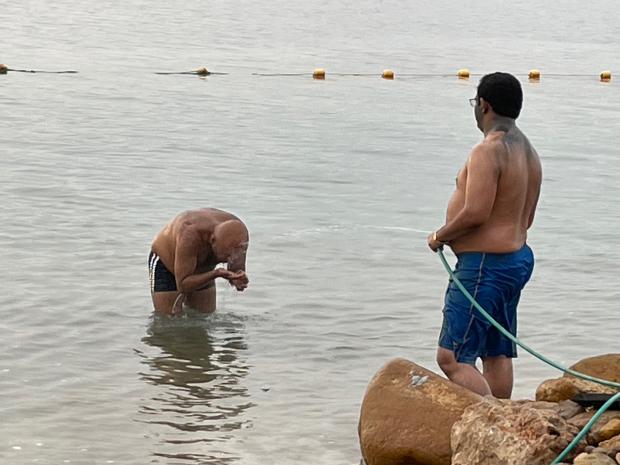
The pain is because the water is 33% salt, ten times more than normal salt water. I dip my hand in and lick a finger. Yup, it’s pretty salty.
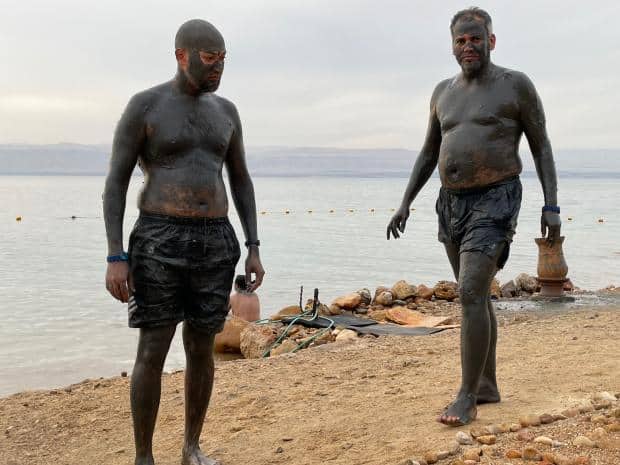
A couple of men are covered from top to toe in black mud. I’m not sure what that’s about but I guess it’s like the silica mud at the Blue Lagoon in Iceland that you can slap on yourself. A hotel staff member seems to be in charge of the mud pot and the freshwater hose. There are also newish looking showers and sun loungers set up.
Chris suggests we come down early tomorrow after breakfast and give it a go. There’s an unspoken feeling that the Dead Sea is unpredictable and might be off limits if anything untoward crops up. And I don’t want to miss my chance, because the whole thing is shrinking.
In the last fifty years it has dropped by 45 metres and is continuing to decrease by over a metre each year. You can actually see where the waterline used to be. This isn’t a climate change issue but a manmade one. The water flowing into it has been diverted for other purposes. The mineral extraction industry is another reason. And Jordan and Israel being extremely dry countries in general.
The next morning, we troop down to the beach again to actually get in. Even though it’s Jordan’s winter, the Dead Sea is warmish, 23 C according to the helpful sign we passed on the way down that indicated the temperatures of the various pools.
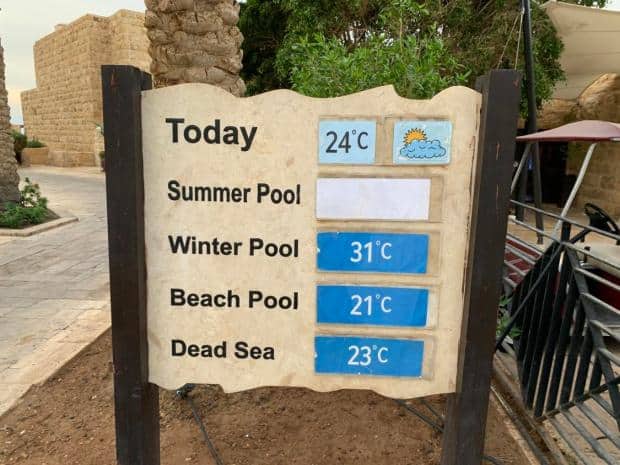
‘You’re only meant to stay in for fifteen minutes,’ cautions the hotel staff member at the shoreline.
Otherwise what? I wonder. Do we explode like slugs? Ignoring the rules we stay in for a decent forty-five minutes. Nothing bad happens. It’s fun being able to float without needing to swim. But incredibly difficult to float on your front without feeling you’re going to pitch face forward into the water.
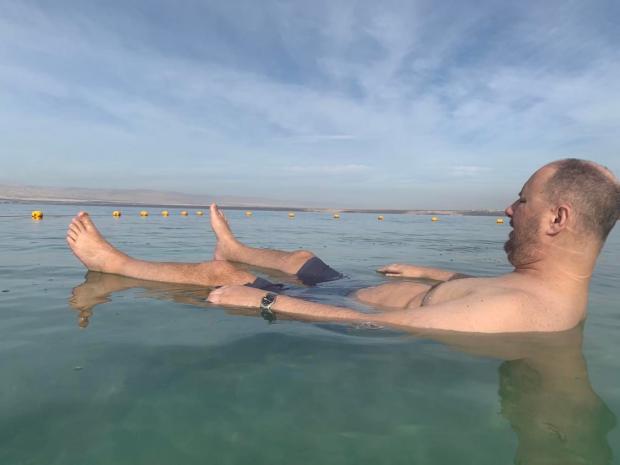
Afterwards we get out, use the showers to wash off the salt and sit on the loungers. I bypass the mud mask as it smells a bit. It’s ten o’ clock in the morning and we realise that we don’t have anything else to do for the day.
We can’t go out and explore because we’re in the middle of nowhere, and only surrounded by other resort hotels. We can literally see the Marriott next door from our balcony. Hiking excursions are available but organised by the hotel because the landscape is rocky and steep.
I’m beginning to understand the necessity of the Disneyland approach.
The Zara Spa seems to be the logical choice for the afternoon, and at 25 JOD each to use the facilities without treatments, we figure it’s actually not that expensive. We each get a locker that contains a robe, slippers, a towel and a few other goodies. The outdoor hydro pool itself is 28 C and huge. It has various waterfalls, bubbles and jets to target different areas of your body.
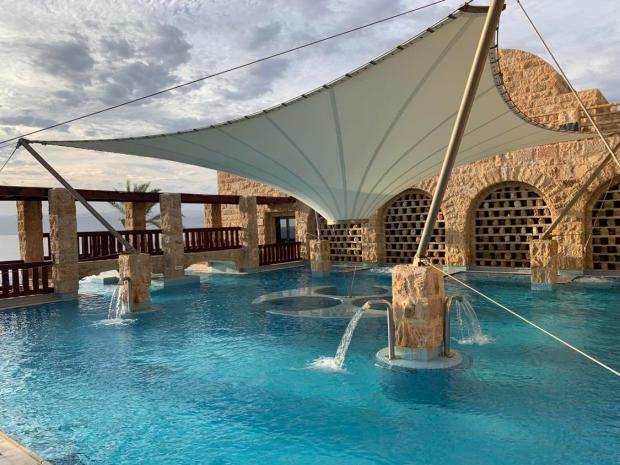
Off to the side, overlooking the Dead Sea is an infinity pool with a row of individual Jacuzzi chairs. It’s fantastic.
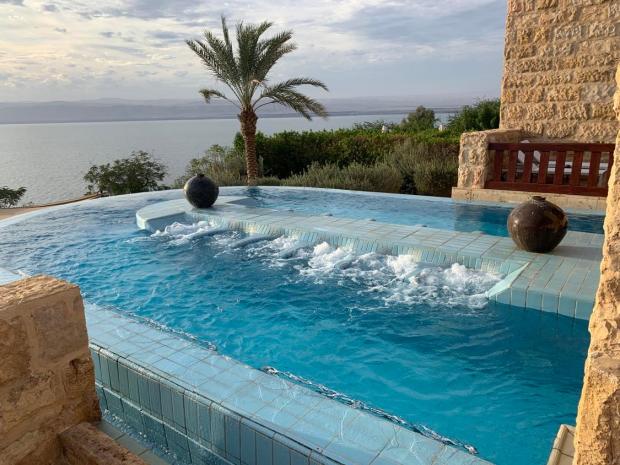
We stay in the pool for at least three hours, and happen to witness an incredible sunset, until hunger drives us back to the hotel for dinner.
I can now see why the spa is the drawcard for many of the guests that stay in the hotel, a stay which may or may not actually include a dip in the Dead Sea.
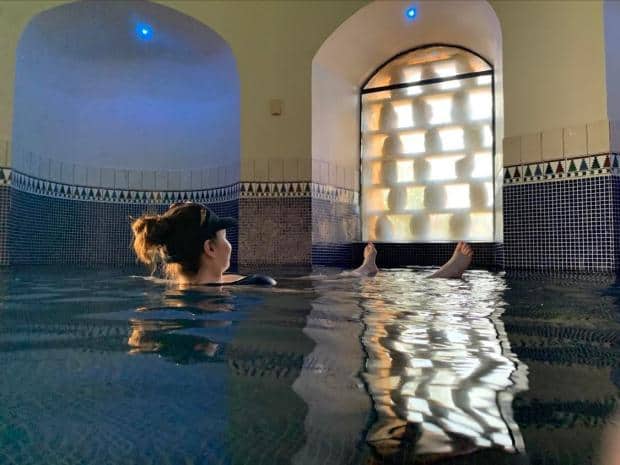
In saying that, the spa does have an indoor Dead Sea pool that is 28% salt water and basically gives you the same floating experience as the beach. But without myriad steps, sand, mud and effort. The cheat’s version. If the real thing ever does dry up, there will be a remnant at the Zara Spa for anyone who doesn’t make it in time.
I’m glad that during our visit that we got to try both experiences.
